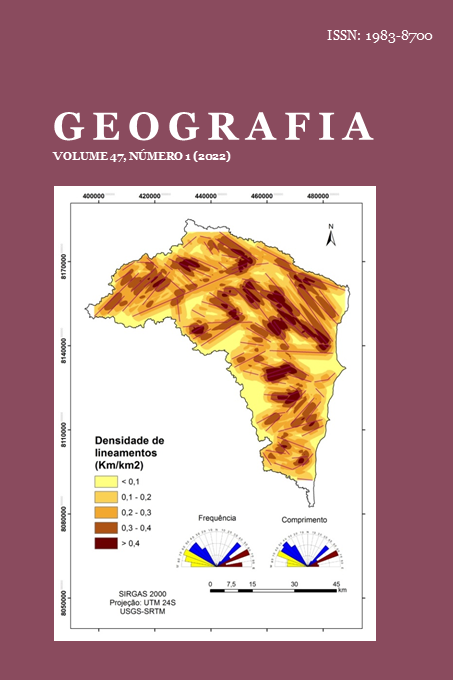CARTOGRAPHIC REPRESENTATION OF THE HYDROGRAPHIC NETWORK AND ITS LIMITATIONS IN THE QUANTIFICATION OF PERMANENT PRESERVATION AREAS
DOI:
https://doi.org/10.5016/geografia.v47i1.16045Abstract
Hydrographic network maps produced by government institutions have been used to delimit Permanent Preservation Areas (PPAs) in Brazil. However, problems arising from discrepancies between those maps and field survey are frequent. To characterize and quantify such discrepancies, whether methodological or due to the scale of the maps or temporal changes, we mapped the springs and watercourses in five rural properties (adding up to 10,860 ha, in the municipalities of Brotas and Ribeirão Bonito, SP). Those maps were then compared with the regional hydrographic network mapped by IBGE and IGC. We verified, for the study area, an oversizing of 157% in the number of springs and 83% in the length of watercourses by IBGE, and 209% in the number of springs and 84% in the length of watercourses by IGC. Consequently, there was an oversizing of PPAs. We therefore consider that such maps can be used as an approximate reference for the hydrographic network, although they cannot provide a basis for legal decisions or environmental planning if they are not duly corrected by field verification.
Downloads
Published
Issue
Section
License
The authors maintain the copyright and grant GEOGRAFIA the right of first publication, with the articles simultaneously licensed under the Creative Commons BY 4.0 License, which allows sharing and adapting the articles for any purpose, as long as appropriate credits and provisions of image rights, privacy or moral rights. Other legal attributions can be accessed at: https://creativecommons.org/licenses/by/4.0/legalcode.en.
Geography, Rio Claro, SP, Brazil - eISSN 1983-8700 is licensed under the Creative Commons BY 4.0 License.





